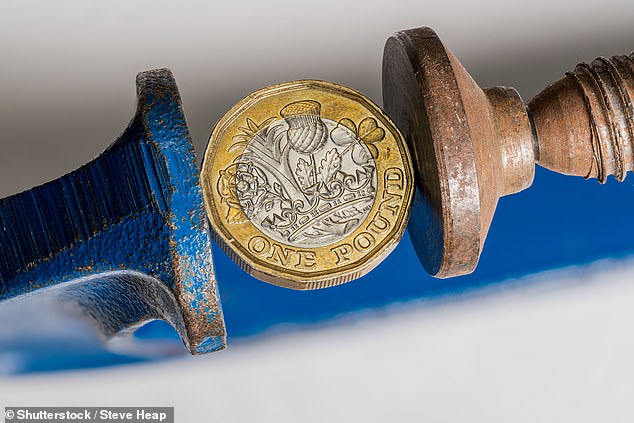January’s retail price cuts help reduce inflation to 2.9% – the lowest level in more than a year
- Figures come from a monthly survey by the British Retail Consortium (BRC)
Major price cuts during the January sales saw retail price inflation fall to 2.9 percent, the lowest level in more than a year.
This figure fell from 4.3 per cent in December after prices of gadgets, furniture and fashion items were slashed to entice shoppers.
Inflation for non-food items fell from 3.1 percent to 1.3 percent in January, the lowest level in almost two years.
The figures come from a monthly survey by the British Retail Consortium (BRC), which welcomed them as ‘New Year cheer’.
The BRC said the average increase in food prices fell from 6.7 percent in December to 6.1 percent in January (stock photo)
Food costs are still high and still make life a struggle for millions of people, but are also showing some signs of decline.
According to the BRC, the average increase in food prices fell from 6.7 percent in December to 6.1 percent in January.
Fresh food fell from 5.4 percent to 4.9 percent, while the rate of increase for packaging and cans fell from 8.4 percent to 7.7 percent.
The price data is good news for shoppers, the government and the Bank of England as it will help fuel the narrative that inflation is coming under control and there will be scope for rate cuts later this year.
Chief Executive of the BRC, Helen Dickinson, said: ‘There was some New Year cheer as retail price inflation slid to its lowest level since May 2022 in January.
“Non-food goods were the driving force behind the decline, as many retailers offered deeply discounted goods in their January sales to stimulate consumer spending amid weak demand.” She said there was good news for those who enjoy a cup of tea, with the price of both tea and milk falling annually.
But Ms Dickinson warned that further falls in inflation are not guaranteed, saying: ‘Progress is likely to be hampered by new cost pressures coming directly from government.

The price data is good news for shoppers, the government and the Bank of England as it will help fuel the narrative that inflation is coming under control and there will be scope for rate cuts later this year (stock photo)
‘These include implementing the National Living Wage increase on top of an above-inflation rise in business rates in April, a potential new ‘surtax’ for grocers in Scotland, and ill-conceived recycling proposals.
“Increasing geopolitical tensions will also increase uncertainty and costs in supply chains. With the general election later this year, we want political parties to outline how they will help drive investment across the country, rather than following the current trajectory which does the exact opposite.”
Head of Retailer and Business Insight, NielsenIQ, Mike Watkinson, said: ‘Shoppers are seeing savings at the checkout at non-food retailers on promotion, and food retailers are continuing to cut prices as the cost of goods falls.
“However, consumer demand remains fragile as most households still do not feel better off after almost two years of inflation.”
